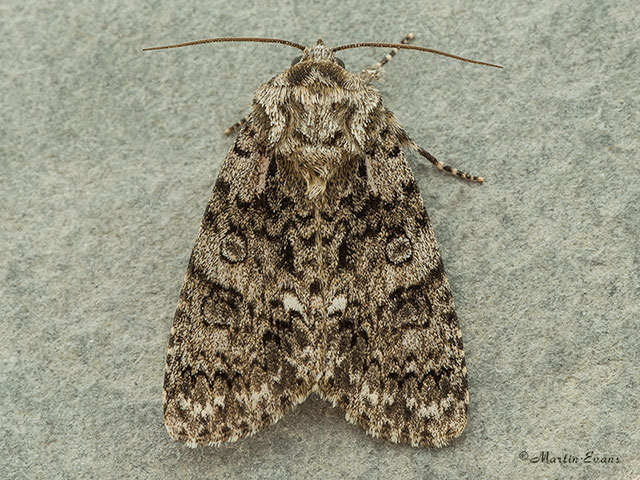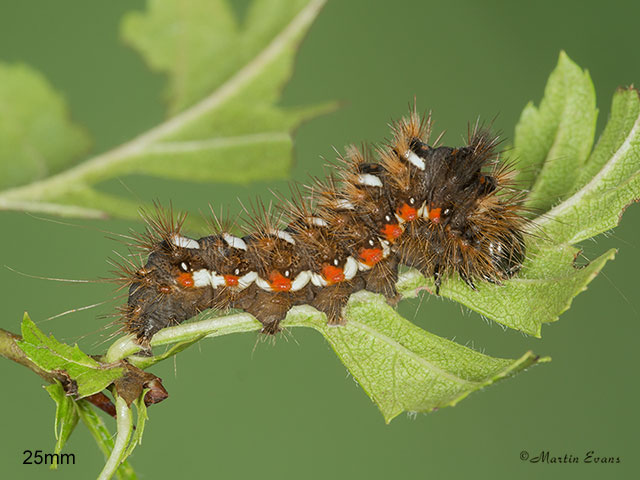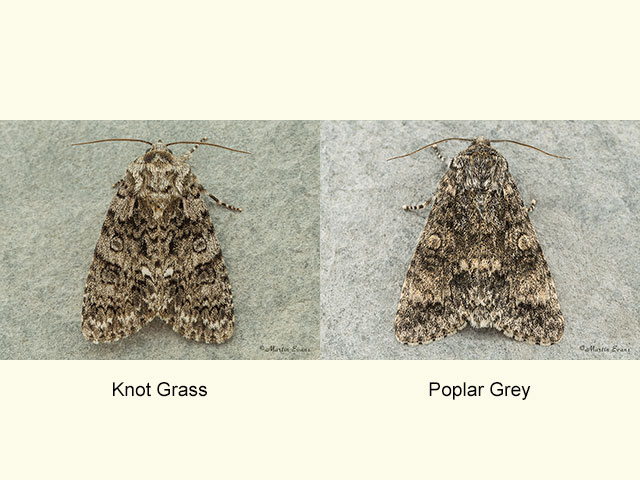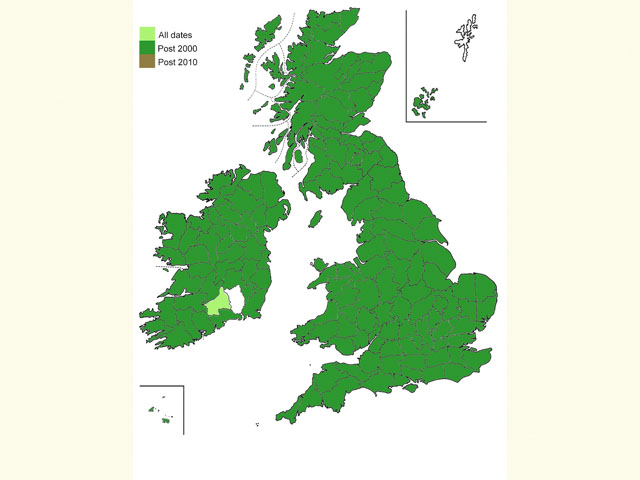Noctuidae
73.045 Knot Grass Acronicta rumicis (Linnaeus, 1758)
Common
Similar species: Poplar Grey Subacronicta megacephala is usually larger (17 to 20mm), with a white or grey-white hindwing (rather than grey-brown), has less defined forewing markings and lacks a prominent white spot two-thirds along the trailing edge. Scarce Dagger Acronicta auricoma is usually smaller (16 to 17mm), has a dagger mark at the wing base and near the trailing corner, and lacks the prominent white spot about two-thirds the way along the trailing edge (although it may be pale like the other markings).
Forewing: 16 to 20mm
Habitats: Open woodland, grasslands, heathland, marshes, fens and gardens.
Habits: The moth is occasionally found at rest on fence posts or telephone poles during the day. It nectars at flowers after dark and comes to sugar and light.
Foodplant: The larva feeds on Heather, plantains, Knotgrass, Water Mint, Broad-leaved Dock, Common Sorrel, Monkey Musk, Hop, Bramble, Burnet Rose, sallows and Hawthorn. It pupates in a cocoon amongst the leaf litter.
On the European mainland it has also been recorded feeding on nettles, goldenrod, Pelargonium spp. and White Willow.







